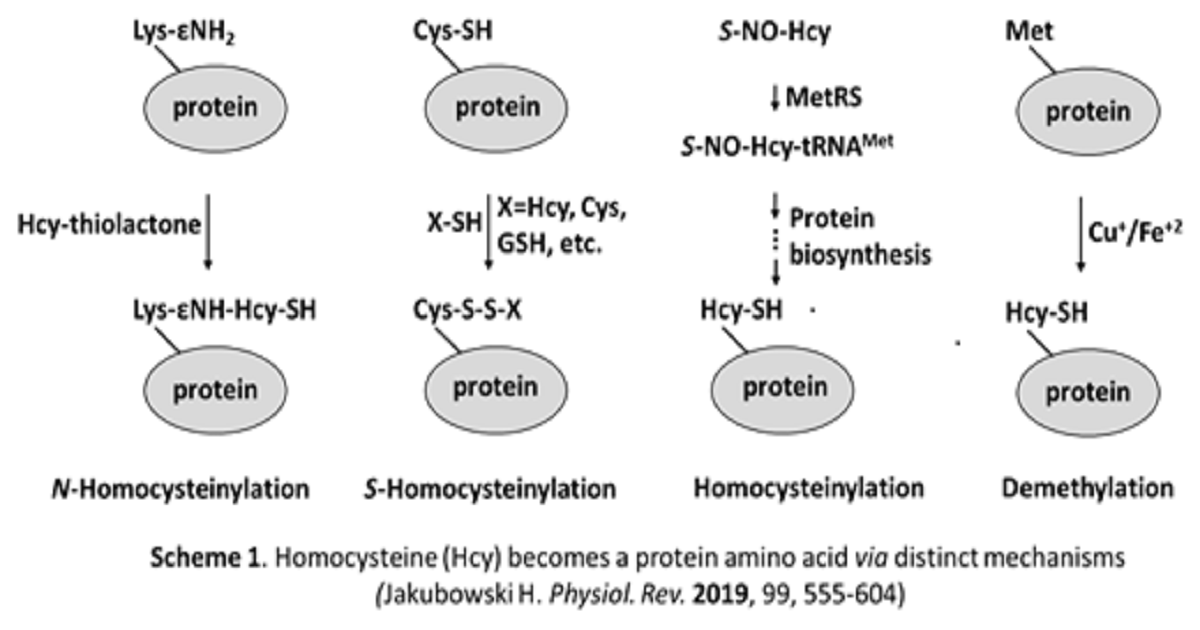Homocysteine in Protein Structure and Function and Human Disease
A special issue of International Journal of Molecular Sciences (ISSN 1422-0067). This special issue belongs to the section "Bioactives and Nutraceuticals".
Deadline for manuscript submissions: 20 January 2025 | Viewed by 4084

Special Issue Editor
Interests: Alzheimer's; autophagy; cardiovascular disease epigenetic regulation; error-editing mechanisms; evolution of peptide bond synthesis; gene expression; homocysteine; mTOR signalling neurological disease; protein modification; protein synthesis tRNA synthetase
Special Issues, Collections and Topics in MDPI journals
Special Issue Information
Dear Colleagues,
Homocysteine (Hcy) links two key metabolic pathways: the one-carbon/folate cycle, which provides one-carbon units for nucleotide and amino acid biosynthesis, and sulfur–amino acid metabolism, which regenerates methionine (Met) and provides cysteine (Cys). While Met and Cys are genetically encoded proteinogenic amino acids, Hcy is non-proteinogenic; however, although Hcy is not genetically encoded, proteins in our body have Hcy residues linked to lysine (Lys) residues via iso-peptide bonds (formed in a chemical reaction with Hcy-thiolactone, i.e., N-homocysteinylation) or to cysteine residues via disulfide bonds (S-homocysteinylation).
Proteins also contain Hcy bound by a peptide bond within the polypeptide chain. Such homocysteinylated proteins are formed either post-translationally via a copper/iron-dependent demethylation of Met residues or via a nitric-oxide-dependent translational mechanism on ribosomes, in which S-NO-Hcy substitutes for Met. Accumulating evidence suggests that N-Hcy-protein can promote cancer, diabetes, cardiovascular disease/stroke, neurodegenerative diseases, infertility, and pregnancy complications.
This Special Issue of the IJMS, entitled “Homocysteine in Protein Structure and Function and Human Disease”, will include a selection of original research papers and reviews on the molecular/cellular biology and pathophysiology of Hcy metabolites. Papers describing recent studies on N-Hcy-protein chemical biology and on the dysregulation of fundamental biological processes, such as mTOR signaling, autophagy, amyloid precursor protein processing, and others, due to N-Hcy-protein/Hcy-thiolactone/Hcy are welcomed.
Prof. Dr. Hieronim Jakubowski
Guest Editor
Manuscript Submission Information
Manuscripts should be submitted online at www.mdpi.com by registering and logging in to this website. Once you are registered, click here to go to the submission form. Manuscripts can be submitted until the deadline. All submissions that pass pre-check are peer-reviewed. Accepted papers will be published continuously in the journal (as soon as accepted) and will be listed together on the special issue website. Research articles, review articles as well as short communications are invited. For planned papers, a title and short abstract (about 100 words) can be sent to the Editorial Office for announcement on this website.
Submitted manuscripts should not have been published previously, nor be under consideration for publication elsewhere (except conference proceedings papers). All manuscripts are thoroughly refereed through a single-blind peer-review process. A guide for authors and other relevant information for submission of manuscripts is available on the Instructions for Authors page. International Journal of Molecular Sciences is an international peer-reviewed open access semimonthly journal published by MDPI.
Please visit the Instructions for Authors page before submitting a manuscript. There is an Article Processing Charge (APC) for publication in this open access journal. For details about the APC please see here. Submitted papers should be well formatted and use good English. Authors may use MDPI's English editing service prior to publication or during author revisions.
Keywords
- Alzheimer's disease
- amyloid beta
- autophagy
- cardiovascular disease
- epigenetic regulation
- homocysteine thiolactone
- methionyl-tRNA synthetase
- mTOR signalling
- protein homocysteinylation
Benefits of Publishing in a Special Issue
- Ease of navigation: Grouping papers by topic helps scholars navigate broad scope journals more efficiently.
- Greater discoverability: Special Issues support the reach and impact of scientific research. Articles in Special Issues are more discoverable and cited more frequently.
- Expansion of research network: Special Issues facilitate connections among authors, fostering scientific collaborations.
- External promotion: Articles in Special Issues are often promoted through the journal's social media, increasing their visibility.
- e-Book format: Special Issues with more than 10 articles can be published as dedicated e-books, ensuring wide and rapid dissemination.
Further information on MDPI's Special Issue polices can be found here.






